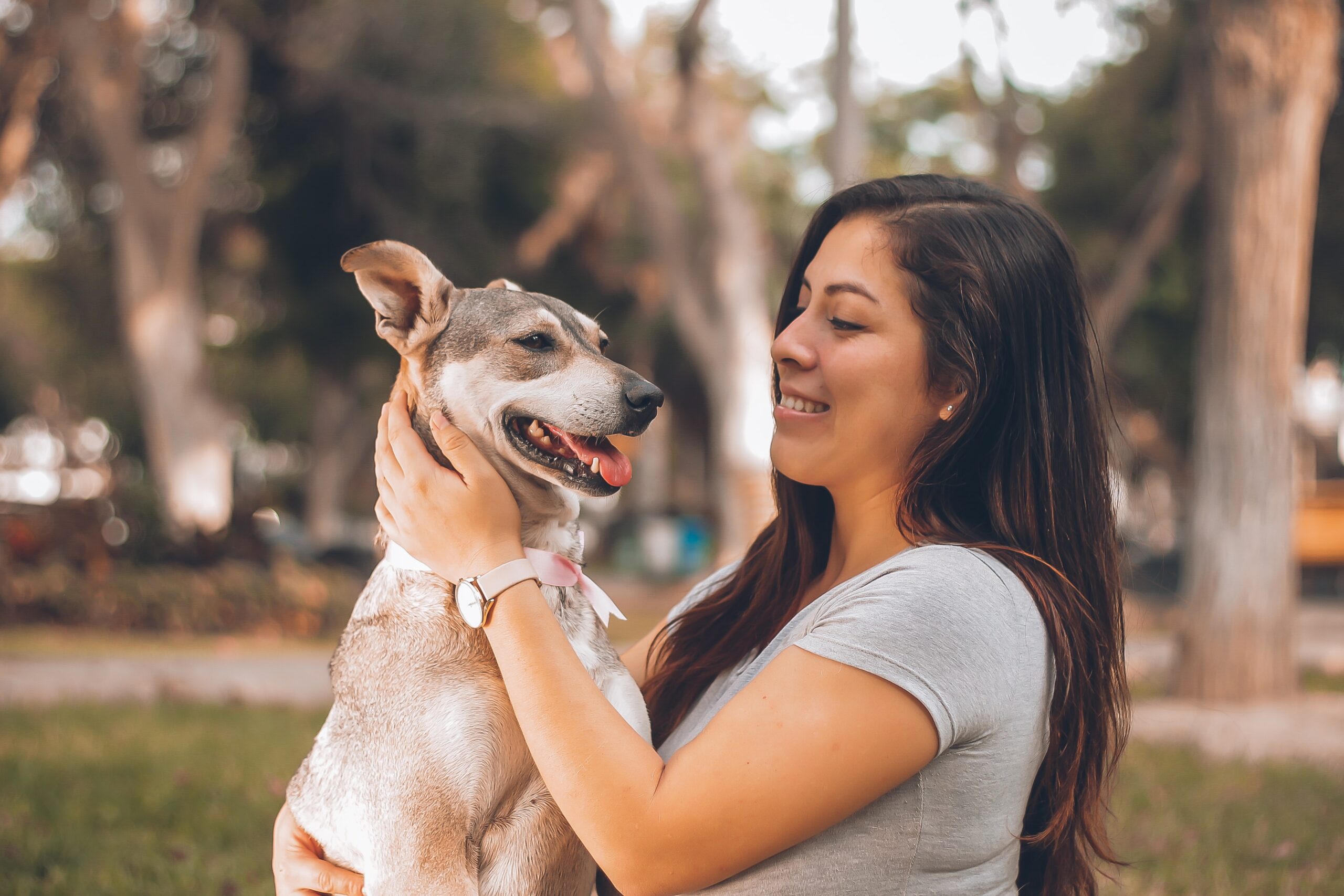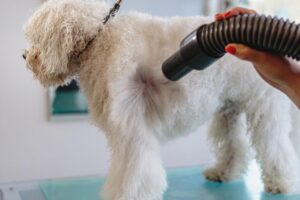
How To Get Sap Out Of Dog Fur: Easy Methods to Clean Your Dog’s Coat
If you’ve ever found your dog covered in sticky sap, you’re probably wondering—why does it stick so well to their fur? Sap clings like it’s part of their coat, thanks to its sticky, resin-like properties. It’s nature’s super glue, and, unfortunately, your dog’s fur is the perfect target. Whether it’s from pine trees or other sticky substances, sap loves fur, paws, and even their tails. It’s almost like it knows that dogs run through everything in their path!
What Are the Risks of Sap on Your Dog’s Skin and Fur?
Not only does sap look messy, but it can also be harmful. Left unchecked, sap can irritate your dog’s skin, causing discomfort, itching, or even rashes. It might even pull at their fur, leading to mats and tangles. And if your dog tries to lick it off, they risk ingesting harmful substances. So, yeah—it’s more than just a sticky situation! Getting it out safely is essential for your dog’s comfort and health.
Understanding Sap and Its Impact on Dog Fur:
What Exactly Is Sap, and Why Does It Stick to Dog Fur?
Sap is a viscous liquid produced by trees, primarily for defense and nutrient transport. It contains sugars, resins, and organic compounds that naturally bond to surfaces, making it stick. Dogs, with their thick fur and active lifestyles, are prime candidates for sap to latch onto. Once it touches the fur, it sticks tight, especially when the sap comes into contact with dirt or other sticky particles. The fibers in a dog’s coat hold onto it like a magnet, making it a real hassle to clean up.
How Can Sap Affect Your Dog’s Fur and Skin?
Sap isn’t just messy—it can also damage your dog’s fur and skin. The sticky substance traps dirt and debris, leading to matted fur that can be painful to remove. More than just cosmetic, sap can cause irritation. Contact with the skin can result in redness, itching, or inflammation. If left too long, it may cause hair loss or even lead to an infection. It’s a combination of physical irritation and a grooming nightmare.
Is Sap Toxic to Dogs?
While sap itself isn’t typically toxic, some types, like pine sap, can cause issues if ingested or if it remains on the skin for too long. Dogs tend to lick their paws or fur, so exposure could lead to stomach upset or allergic reactions. Some species of trees, especially certain pines, contain compounds that can be harmful when consumed. It’s not likely a huge danger, but it’s definitely something to watch out for, especially if your dog has a habit of chewing or licking at sticky spots.
How to Safely Remove Sap from Your Dog’s Fur:
What Are the Best Methods to Safely Remove Sap from Dog Fur?
Removing sap from dog fur doesn’t have to be a nightmare. There are several safe methods to try. The key is using gentle, non-toxic products that won’t harm your dog’s skin or fur. Oil-based solutions like vegetable oil, olive oil, or even coconut oil work wonders by loosening the sticky sap. For stubborn spots, try peanut butter or WD-40, but always test a small area first to ensure your dog’s skin isn’t sensitive. And remember, no matter what method you choose, you’ll need a good soak and a thorough cleaning to get everything out.
How Should You Apply Oil or Fat-Based Products for Sap Removal?
When using oil-based products, the goal is to gently break down the sap without hurting your dog’s fur. Start by applying the oil directly onto the sticky area. Use your fingers or a soft cloth to rub it in gently. Let it sit for a few minutes to soften the sap. After that, comb through the fur to remove the loosened sap, and be patient—it may take a few passes. Finally, wash your dog with a gentle pet shampoo to remove any leftover oil and sap. This method is great for sensitive skin, but make sure to rinse thoroughly.
Can You Use Vinegar or Rubbing Alcohol for Sap Removal? (Emphasizing Safety Concerns)
While vinegar and rubbing alcohol are popular cleaning agents, they’re not always safe for dog fur. Vinegar can be too harsh for some dogs, causing dryness or irritation. Rubbing alcohol might strip away natural oils from the fur, leaving it brittle and more prone to breakage. If you do decide to use these, dilute them with water and test on a small patch first. And, of course, keep your dog from licking the treated area—some alcohol-based solutions can be toxic if ingested. Always prioritize gentler alternatives when dealing with your dog’s sensitive skin.
Are Commercial Pet Products Safe for Sap Removal?
Many commercial pet products are formulated to remove sap, but not all are created equal. Pet-safe citrus sprays, grooming wipes, and specialized degreasers can work wonders. Just make sure they’re free of harsh chemicals or additives that could irritate your dog’s skin. Always read the labels and consult your vet if you’re unsure. Natural products are often safer for sensitive skin, but do your research before applying anything new. If you’re using a commercial product, apply it gently and always follow the instructions closely for safe and effective use.
Step-by-Step Guide to Removing Sap from Dog Fur:
How Should You Handle Sap If Your Dog Gets It on Their Fur?
First, stay calm! Don’t panic—sap can be removed with patience. Immediately check the affected area and try to contain the mess by keeping your dog still. If it’s a small patch, you might be able to work on it right there. If the sap has spread over multiple spots, you may want to gently trim the fur around it for easier access.
How Do You Apply Oil or Fat-Based Products to Remove Sap?
Gently apply oil (vegetable, olive, or coconut) directly to the sap using a soft cloth or your fingers. Rub the oil into the sticky area to break down the sap. Let it sit for a few minutes, giving it time to soften. Once loosened, use a comb or your fingers to remove the sap, carefully working through the fur. Be patient—it can take a few tries to get it all out.
How Should You Clean Your Dog’s Fur After Removing Sap?
Once you’ve removed as much sap as possible, it’s time to clean your dog. Wash their fur with a gentle pet shampoo to remove the oil and remaining residue. Use lukewarm water, as hot water can irritate their skin. Be thorough but gentle to avoid causing any skin irritation. Rinse and repeat if necessary, and don’t forget to give them a good dry-off afterward.
How Can You Prevent Skin Irritation After Sap Removal?
To prevent skin irritation, always test products on a small patch of fur first. After sap removal, apply a moisturizing pet lotion or an oatmeal-based lotion to soothe the skin. Ensure the skin is completely clean and free of any sticky residue before applying any products. If irritation persists, consult your vet, as your dog’s skin may be more sensitive than usual after sap removal.
Tools and Products to Safely Remove Sap from Your Dog’s Fur:
What Home Remedies and Tools Are Best for Removing Sap from Dog Fur?
When it comes to home remedies, there are a few trusty tools that work wonders on sap. Coconut oil, vegetable oil, or olive oil are great natural options to soften and break down the sap. If the sap is stubborn, peanut butter can also help, thanks to its greasy texture. As for tools, a comb or soft cloth is ideal for gently working through the fur, and a nailbrush works well for paws. Just be sure to stay patient!
Which Over-the-Counter Products Should You Avoid When Removing Sap from Dog Fur?
While it may be tempting to grab something off the shelf, there are a few products you should avoid. Harsh chemical solvents like acetone, and products not specifically designed for pets, can irritate your dog’s skin. Nail polish remover is another no-go—it may contain chemicals that can harm your dog. Additionally, steer clear of any products with artificial fragrances or alcohol, as they can dry out your dog’s sensitive skin. Always read labels and double-check ingredients!
How to Prevent Sap from Sticking to Your Dog’s Fur:
How Can You Prevent Sap from Getting on Your Dog’s Fur?
Preventing sap from sticking to your dog’s fur starts with simple caution. Avoid areas with dense pine trees or sticky plants during walks, as these are common sap sources. If your dog has a habit of running through forests or wooded areas, consider using a dog harness to limit contact. Regular grooming can also help reduce tangles where sap might cling. And, of course, always keep your dog on a leash in areas where sap is prevalent to minimize exposure.
Are There Protective Coatings You Can Apply to Your Dog’s Fur?
Yes, there are protective coatings that can help keep sap from sticking to your dog’s fur. Some pet-specific sprays create a barrier on your dog’s coat, making it more difficult for sticky substances to cling. Waterproofing sprays for dogs can be particularly useful, especially if your dog loves to play outside. Additionally, pet-safe conditioners can provide a thin protective layer over the fur. Just make sure the product is designed for dogs to avoid skin irritation and always test it on a small patch first.
When to See a Vet:
Should You Consult a Veterinarian if Sap Remains Stuck to Your Dog’s Fur?
If sap remains stuck to your dog’s fur after trying the usual remedies, or if it’s causing pain, irritation, or stress, it might be time for a vet visit. Sometimes, stubborn sap can lead to infection or may get tangled so badly that it requires professional grooming. If your dog is excessively licking or biting the area, it could indicate further discomfort. A vet can ensure there are no underlying issues, like skin damage or an allergy to sap.
What Should You Do if Your Dog Has a Reaction to Sap or Develops Skin Irritation?
If your dog develops skin irritation, such as redness, swelling, or itchiness, after contact with sap, you should seek veterinary advice. Allergic reactions are possible, and certain types of sap can cause dermatitis. In some cases, your dog may need topical treatments or even oral medication to soothe the irritation. Always avoid home remedies if your dog’s condition worsens or doesn’t improve. Veterinary care is crucial to ensure safe healing and prevent further complications.
Conclusion: How Can You Keep Your Dog Safe and Comfortable After Removing Sap from Their Fur?
After you’ve successfully removed sap from your dog’s fur, it’s important to ensure their comfort and safety. Make sure you thoroughly clean the area with a gentle shampoo to remove any residue. Follow up with a soothing, moisturizing treatment if needed to calm their skin. Always check for signs of irritation or discomfort, as even small issues can escalate.
Remember, while sap removal might seem like a small task, it can affect your dog more than you realize. Keep a close eye on them and be proactive about preventing it in the future. It’s not just about removing the mess; it’s about making sure your dog feels safe and loved. So, next time you’re out exploring with your furry friend, think about their well-being—because keeping them happy and healthy is all part of the journey.
📚 Sources
- American Kennel Club (AKC)
- Ontario SPCA and Humane Society
- Whole Dog Journal
- Dogster
- The PetLab Co.
- JustAnswer
- Espree Animal Products
- Musher’s Secret
- Better Homes & Gardens
- The Spruce Pets






